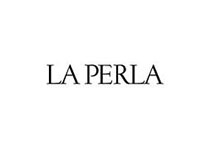La Perla
Accessories / Fragrance / Swimwear / Underwear & Lingerie
As Italy’s sexiest brand, the company is a leading creator of luxurious and fashionable lingerie, nightwear, swimwear, and loungewear for women and men since 1954. In 1954, Ada Masotti, an artisan ...
As Italy’s sexiest brand, the company is a leading creator of luxurious and fashionable lingerie, nightwear, swimwear, and loungewear for women and men since 1954. In 1954, Ada Masotti, an artisan skilled in the tradition of hand crafted Bolognese corsetry opens a lingerie boutique in Bologna. The name “La Perla” was inspired by the jeweler’s case lined with red velvet in which the first creations were transported. Operating from a city famous for its highly developed textile industry, Masotti simply used top quality fabrics to create exclusive and select underwear focusing initially on corsetry. She intimately appreciated and demonstrated an uncanny anticipation of women’s desires and body shape, designing a collection of lingerie that flawlessly complemented Christian Dior’s “New Look”, a major fashion trend of the time.Brand Details
Founder
Ada Masotti
Designer
Giovanni Bianchi
from
2010to
PresentBrand Strategy
Market segment
Luxury
Core business
Underwear & Lingerie
Targets
Men, Women
La Perla Financial Report 2024
Last fiscal year ended on December 31, 2021

.jpg)